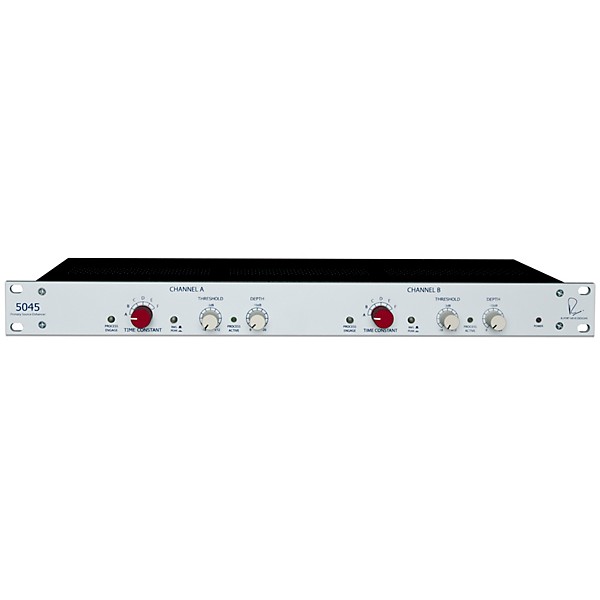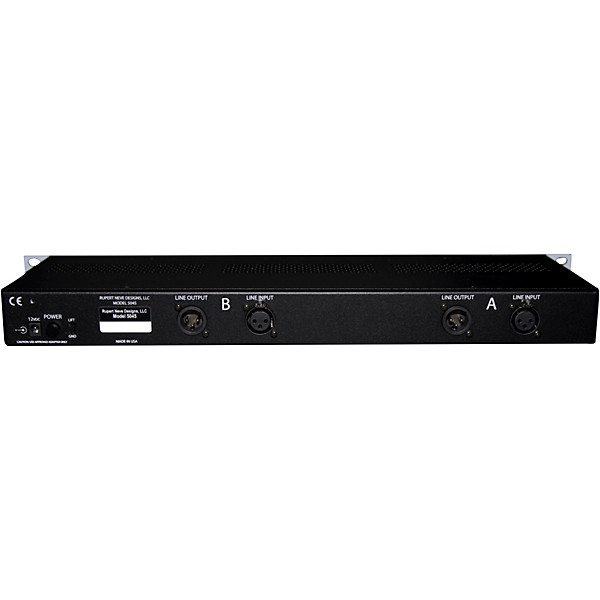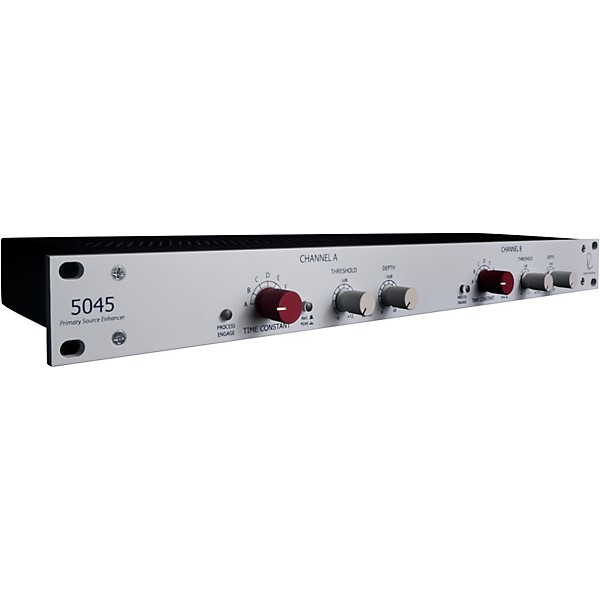Gear SpecialistBundlingMusician
Guitars
Guitars
Amps & Effects
Amps & Effects
Used & Vintage
Keyboards & MIDI
Keyboards & MIDI
Drums
Drums
DJ Equipment
DJ Equipment
Basses
Basses
Recording
Recording
Live Sound
Live Sound
Accessories
Accessories
Mics & Wireless
Mics & Wireless
Music Software
Music Software
Lighting
Lighting
- Popular Brands
Band & Orchestra
Band & Orchestra
Platinum Gear
Deals
Rupert Neve Designs Rupert Neve Designs 5045 Primary Source Enhancer
$1,999.00
6-month special financing^ + $99 back in Rewards** Limited time Learn More
Lease-To-Own Purchase OptionsLearn more
Protect your gearLearn more
Cover drops, spills or cracks with Pro Coverage
Save on orders $199+ and get expert advice from a Gear Adviser
Need Help?

Description
The world’s most natural feedback reduction.
The 5045 Primary Source Enhancer is exceptionally useful at reducing feedback without negatively impacting the sonic integrity of the source signal, effectively increasing the level a microphone can be raised before feedback occurs in a live sound environment by up to 20dB. With controls that are very simply laid out and generally require minimal adjustment, the 5045 is an invaluable tool for churches, stadiums, performance halls, or any venue where feedback is problematic.
100% Analog Design
The 5045 shares some traits with conventional “noise gates”, but operates on a different principle. One common aspect is that both reduce the gain during the absence of signal–or more specifically, both begin to attenuate when the level of a signal falls below a certain user-defined threshold. The 5045 senses when someone is speaking or singing into the mic and allows the signal to pass through, and senses when the person has stopped talking or singing and reduces the gain appropriately, thus reducing the system’s tendency to feed back.
Importantly, the 5045 does not utilize filtering or digital processing to achieve its significant benefits. Built around Rupert Neve Designs’ custom input and output transformers, its all-analog circuitry provides superb control and sonic performance without compromising the integrity of the source material. This makes the 5045 the most intuitive, natural-sounding and effective method of feedback reduction available on the market.
Simple, Intuitive Controls
With a minimal control set, the 5045’s ease of use makes it ideal even for circumstances where a full-time or experienced engineer is not readily available, and allows for rapid adjustments on-the-fly even during performances.
The 5045 is an absolutely indispensable addition to any setup where feedback or reverberation are problematic, and is used every night on the biggest stages all across the world.
The 5045 Primary Source Enhancer is exceptionally useful at reducing feedback without negatively impacting the sonic integrity of the source signal, effectively increasing the level a microphone can be raised before feedback occurs in a live sound environment by up to 20dB. With controls that are very simply laid out and generally require minimal adjustment, the 5045 is an invaluable tool for churches, stadiums, performance halls, or any venue where feedback is problematic.
100% Analog Design
The 5045 shares some traits with conventional “noise gates”, but operates on a different principle. One common aspect is that both reduce the gain during the absence of signal–or more specifically, both begin to attenuate when the level of a signal falls below a certain user-defined threshold. The 5045 senses when someone is speaking or singing into the mic and allows the signal to pass through, and senses when the person has stopped talking or singing and reduces the gain appropriately, thus reducing the system’s tendency to feed back.
Importantly, the 5045 does not utilize filtering or digital processing to achieve its significant benefits. Built around Rupert Neve Designs’ custom input and output transformers, its all-analog circuitry provides superb control and sonic performance without compromising the integrity of the source material. This makes the 5045 the most intuitive, natural-sounding and effective method of feedback reduction available on the market.
Simple, Intuitive Controls
With a minimal control set, the 5045’s ease of use makes it ideal even for circumstances where a full-time or experienced engineer is not readily available, and allows for rapid adjustments on-the-fly even during performances.
The 5045 is an absolutely indispensable addition to any setup where feedback or reverberation are problematic, and is used every night on the biggest stages all across the world.
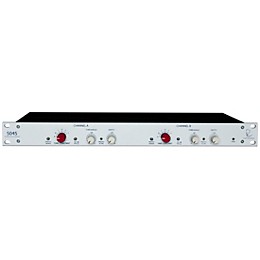
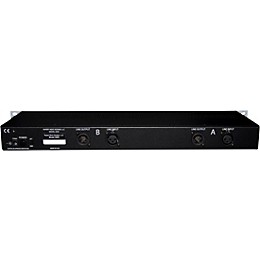
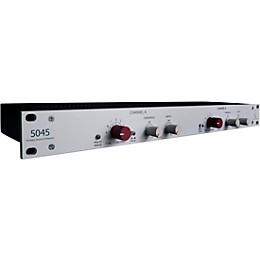
Features
- Power status LED-LED indicates power status
- Process engage-Illuminated push-button that engages the Primary Source Enhancer’s effect
- Time constant-Designed to help prevent choppiness in some situations and stop feedback in other situations, by setting how quickly the attenuation occurs in the quiet sections between words or sentences, “A” is the fastest and “F” is the slowest, “A” will quickly soften the level which can be advantageous when the singer is consistent and feedback howl is challenging. “F” is the safest in terms of slowly fading down, but might be a bit slow fading up again, and might be a bit slow for controlling some pesky feedback situations, “C” and “D” are moderate settings that should fit many situations and generally fade down slow enough so that the ends of words are not affected, yet fast enough to control feedback, choose the most appropriate time constant that doesn’t soften the beginnings and endings of phrases, yet still diminishes the feedback and “boominess” of the signal
- RMS / PEAK-Illuminated push-button that selects between RMS and Peak detection modes, when illuminated, the 5045 is in PEAK mode–useful for detecting faster transient peaks, and for creative dynamic envelope shaping. when not illuminated, the 5045 is in RMS mode, which utilizes a slower, more averaged response characteristic in the sidechain
Specs
Threshold
Continuously variable from -20 dBu to 10 dBu
Continuously variable from 0 dBu to 20 dBu
Time Constant data collected using 10 dB bursts.
A: 50mS B: 100mS- C: 200mS
- D: 750mS
- E: 1.5S
- F: 3S
Fixed 20mS
A: 20mS- B: 200mS
- C: 1S
- D: 2S
- E: 5S
- F: 30S
+25 dBu
@ 1 kHz, +20 dBu output level, no load.- Main Output, feedback suppressor bypassed: Better than 0.002%
- Main Output, feedback suppressor engaged: Better than 0.002%
Measured @ Main Output, un-weighted, 22 Hz - 22k Hz, 50 Ohm terminated input. Feedback suppressor bypassed. Better than -100 dBu- Feedback suppressor engaged: Better than -95 dBu
Main Output: @ 20 Hz -3 dB, @ 150 kHz -3 dB
Measured Channel to Channel: Better than -80 dB @ 16 kHz
12V DC Input, 1 Amp
Featured Articles
Reviews
Be the first to review the Product
Q&A
Have a question about this product? Our expert Gear Advisers have the answers.
No results but…
You can be the first to ask a new question.
It may be Answered within 48 hours.


